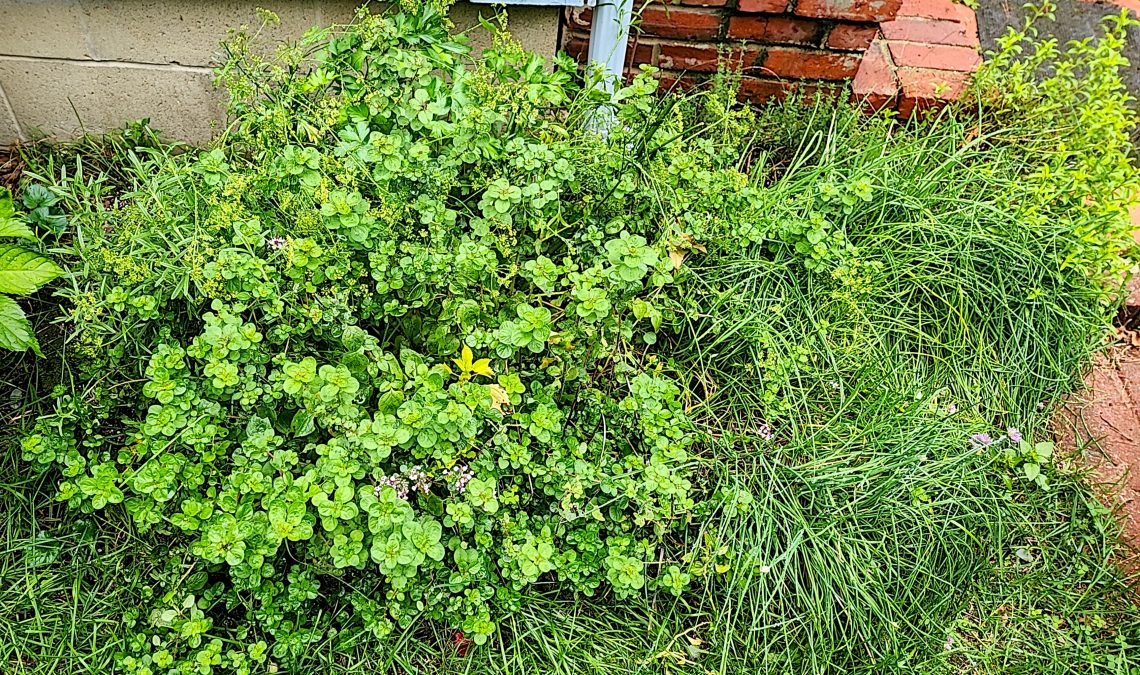
Saving Summer Herbs for Savory Winter Flavors
It’s time to harvest the last of the summer herb garden, and this year I’m vowing to preserve what’s left after a summer of fresh flavorings. The average frost date in our area happens this week, so we’re on borrowed time. One of these upcoming nights is going to be a light frost, and it won’t be long before a killing frost happens, so time is of the essence.
Nature has already fired a warning shot. My basil is gone for the year. But in the waning days of the growing season, I have a hodgepodge of herbs in my kitchen herb garden (as you can see from the photo above): rosemary, oregano, thyme, parsley, chives, and tarragon. Turns out that these are the ingredients for a green sauce, one of the simplest concoctions in the world. Herbs are pounded or whizzed into an emerald paste after building an aromatic base and adding some additional flavorings. We know these sauces as pesto, pistou, salsa verde, and chermoula. But some other lesser-known versions are chimichurri, chatni, mojo verde, zhoug, and ajika.
Simple sauces
The beauty of these flavorful sauces is they’re easy to make and preserve over the winter. Just grind the herbs in a food processor, then add other ingredients of your choosing – cheese and pine nuts for classic pesto, for example – and continue pulsing them in the food processor while pouring olive oil through the feeding tube. You can also add aromatics such as braised onions and garlic before pulsing. (Of course, you can also make sauces by mashing the herbs and additional ingredients in an old-fashioned mortar and pestle, which gives you more control over the texture.) To preserve, you can freeze the sauce in ice cube trays, then remove the cubes and store them in a plastic bag in the freezer.
These convenient cubes have a variety of uses from simple pasta dishes to marinades, sauces, and other flavorings to enhance breakfast, lunch, or dinner. Imagine a quick dinner made by warming some of the cubes and adding to a plate of hot pasta along with a big handful of shredded Parmesan cheese.
The reference to the hodgepodge in my herb garden is appropriate because one of my favorite green sauces, chimichurri, literally means hodgepodge – derived from in the Basque, tximitxurri. It seems that the Basques who migrated to Argentina in the 19th century brought the concept with them. Today in beef-loving Buenos Aires, you can find the garlicky green mix of parsley, oregano, cilantro, garlic, and vinegar coating grilled beef.
Of course, the best-known herb sauce is basil-heavy pesto, but my basil is shot. Unless I wish to buy a bunch or two at the local farm store, I’ll need to find a different recipe such as salsa verde. The Italian version of salsa uses parsley with capers and anchovies and sometimes a dash of mustard and vinegar. The Spanish version uses cilantro, tomatillos, green chilies, garlic, and onion to accompany barbecued meat or tacos.
Spicy salsas
India’s version, chatni (chutney), is a spicy relish made with cilantro and spiked with chilis and served as a side dish. In Morocco, the green sauce is known as chermoula, and recipes vary considerably. It’s typically made with parsley, basil, cilantro, onions, garlic, and preserved lemons, and usually served as a marinade for fish or meat.
Southern Italy has a salmoriglio made with oregano and capers to accompany fish or pork or to use as a marinade for lamb. The Canary Islands’ mojo verde sauce often accompanies salty potatoes. Yemen and Israel contribute a fiery green sauce called zhoug made with cilantro and green chilies, adjusted to suit the taste of the diners. Lastly, the country of Georgia offers a spicy ajika made with chilis and herbs such as cilantro, parsley, and basil.
Based on these recipes, you could almost conjure up your own mixture to suit your taste and call it what you will. Do you have a green sauce? What do you call it?
To comment, please click on “Read in Browser” or on the headline to view the blog on the website. You can log in and comment at the end of the blog to share your thoughts and start a discussion.
If you’d like to share the blog, click on the Facebook icon or one of the others. Thanks!




